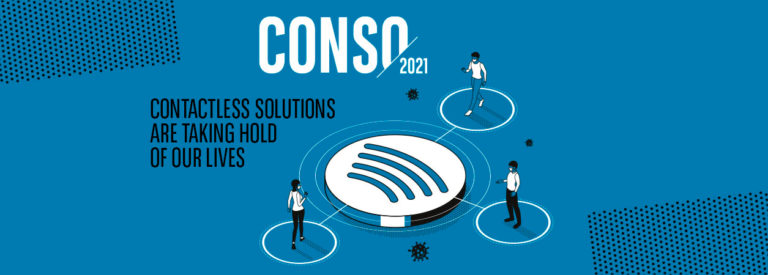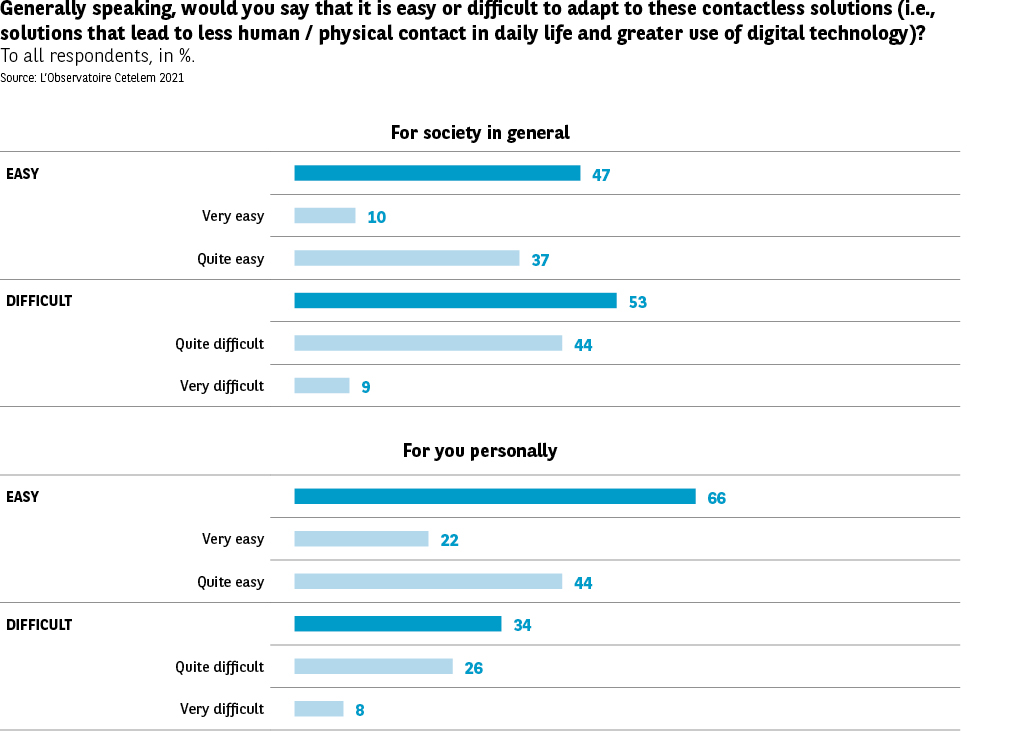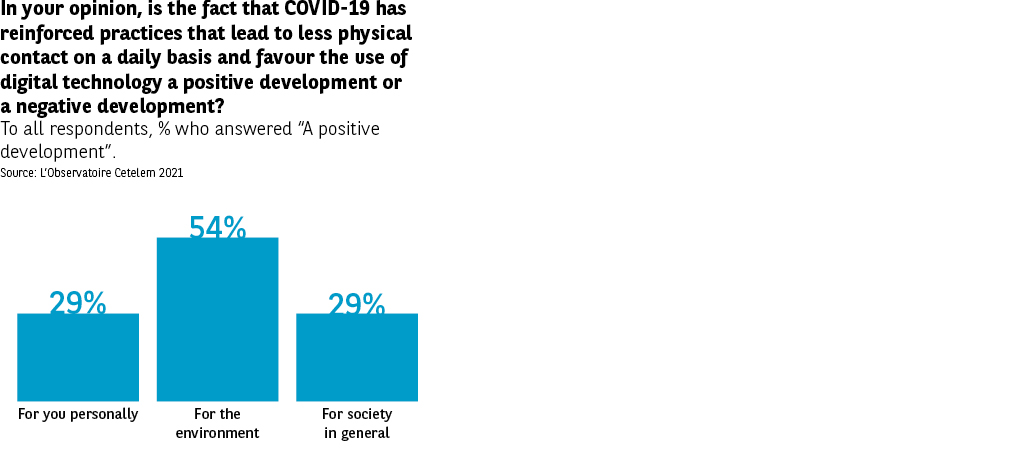An individual and collective duality


Easy for me, not so easy for others
So, all things considered, is contactless living easy? Yes, or so Europeans tell us. However, a distinction must be drawn between the specific and the general. Because as ever — remember the Observatoire Cetelem Barometer’s results for personal circumstances and national situations — Europeans focus more on the “I” than the “we”. This ego-satisfaction leads 66% of respondents to state that it is easy for them to adjust to contactless living (Fig. 25). Two countries from the Northern group are the most likely to make this claim: the UK and Sweden (74%). This feeling is least prevalent in the Central European group of countries, with Poland scoring the lowest on this question (60%). The French are similarly minded on the topic (61 %).
However, a little under 1 in 2 Europeans believe that society finds it easy to adjust to contactless living. And this time around, the differences between our three geographical areas are more stark. In the Northern group, the United Kingdom, Sweden and Germany stand very much apart by expressing confidence in their country’s adaptability (64%, 54% and 52%). In the Central European group, Bulgaria, Romania, Poland and Hungary are a lot more dubious (31%, 32%, 35% and 37%). France and Spain, two countries from the Southern group, post results that are not far off the average (48% and 45%).
66% of Europeans say they find it EASY to adjust to contactless living.
Environmental benefits
A “qualitative” assessment of a contactless life amplified by the pandemic underlines the dichotomy between the “collective” and the “individual”. 48% of Europeans are of the view that the expansion of contactless practices as a result of Covid-19 is having a negative impact on society, while just 42% believe it has been bad for them personally. However, one big winner emerges: the environment. 1 in 2 Europeans state that the rapid development of contactless living is good for the environment (Fig. 26).
The Southern group, excluding France, is invariably more enthusiastic about the benefits of the expansion of contactless practices under the influence of the pandemic, regardless of the item in question. Opinions are more equivocal in the two other groups of countries.
« We have changed the way we do things at work. We print less material and the use of electronic methods is encouraged. That’s good for our carbon footprint. We have all naturally evolved in that direction. And that’s very POSITIVE. »


